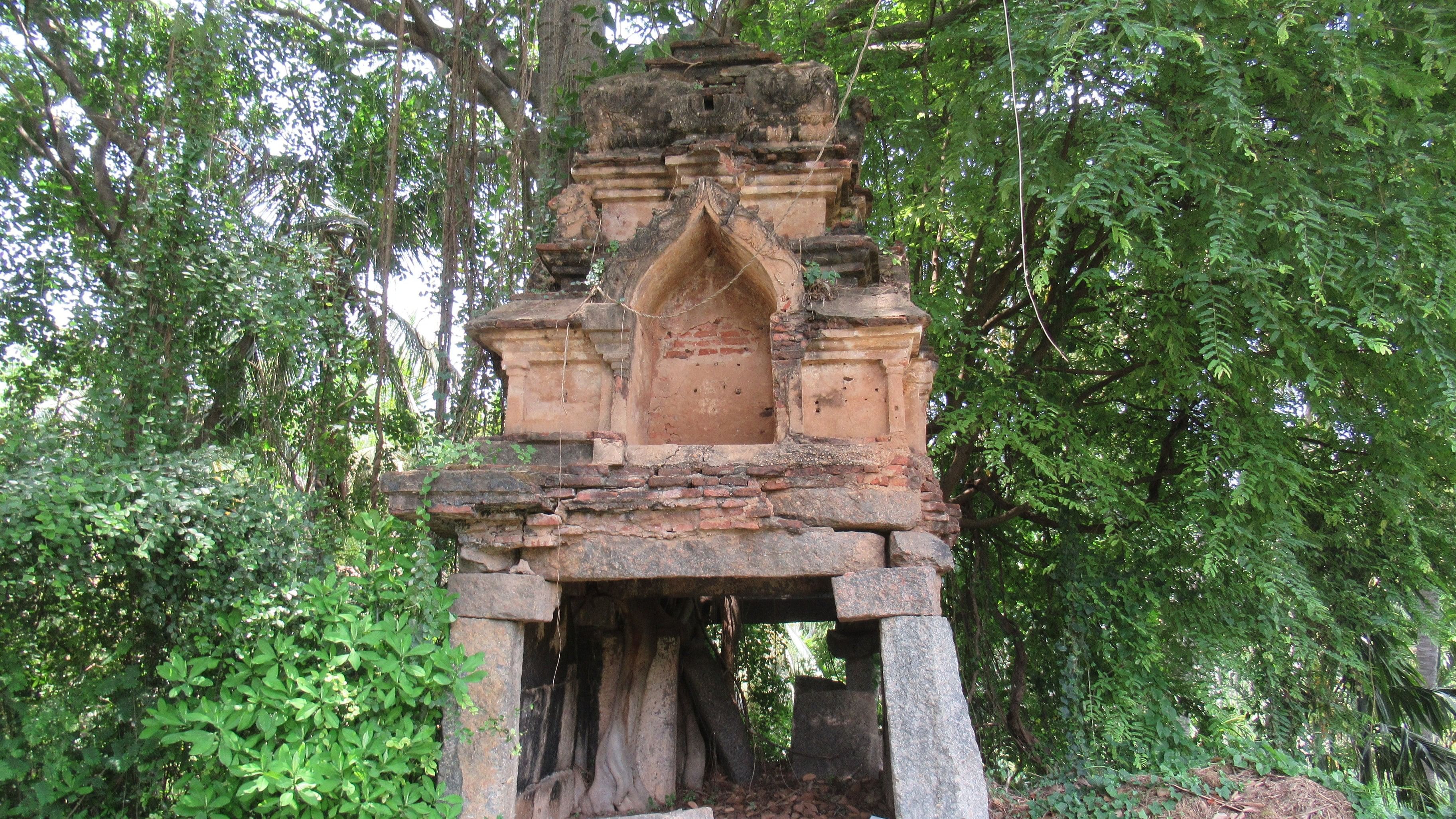
The towering twin rocks of Kutagal; (top) the Somadeva temple.
Credit: Kirti Malhotra
Whenever I travelled on the Ramanagara-Jalamangala-Magadi highway, I had always been awestruck by a pair of towering rocks, popularly known as Kutagal betta.
I had heard tales of how a washerman and the woman he loved were cast out from the village, and their deep love for each other was immortalised by a divine saint in the form of these two rocks, aptly called Kutagal (union of rocks).
For my trek, I got down at the Shanubhoganahalli village stop and started walking on the Kutagal-Ankanahalli road. During my climb uphill, on uneven stone slabs and, at times, on the roughly carved out steps on the rocky surfaces, I came across the figure of Hanuman, neatly etched on the side boulder. My climb ended near the parking lot at Thimmappana betta.
After visiting the ancient Thimmappa Swamy temple, I strolled around the rock plateau on the other side of the parking lot, which provided a majestic view of the twin rocks joined at their base. The hill on which the twin rocks stood was inviting.
I descended to the valley in between, and climbed up on the other side, to reach the base of the twin rocks. After going around and squeezing through the gap between the rocks, I took a short rest inside the cave-like natural enclosure, enjoying the cool breeze and captivating silhouette of Thimmappana betta against the evening sun.
I wondered if the hill got its name after the residing god, or after Thimmappa Nayaka, who ruled this ‘kingdom’ 500 years ago.
While reading about an 1530 AD inscription found ‘at Kutakallu, on a stone north-east of Perumalu-Modaliyar’s field’, as per Epigraphia Carnatica Vol 9 for Bangalore District (EC9), I had come across ‘the master of the kingdom Timmappa Nayaka who, along with Singarasayya, made the grant of Pilenahalli to the god Someshwara’.
The towering twin rocks of Kutagal; (top) the Somadeva temple.
Credit: Kirti Malhotra
On my return journey, when I took the route used by vehicles, I observed a signboard indicating the directions to ‘Chakrasone, the legendary place where Rama and Sitha had bathed’.
The Mysore Archaeological Survey Report (MAS) for the year 1909-1910 mentions the Anjaneya and Somedeva temples in Kutagal village. It also mentions ‘the village deriving its name from the nearby rock named as Galagakallu and was said to represent the site of Kanva’s hermitage.’ It talks of ‘a spring called ‘Chakrasone’, owing to the circular motion of the water in it’.
A second trip
I returned to Kutagal, to look for the inscription stone and observe the present state of those temples, apart from the trek to Chakrasone. With guidance from the senior villagers, I located the renovated Anjaneya temple, which has some ancient relics in its present premises.
Walking on the mud road, near two old stone pillars and close to the River Kanva, I saw the Somedeva temple, now in utter ruins, with some remains of the past glory on its gopura and outer walls.
When I enquired about the ‘Perumala Modaliyar’ mentioned in EC9, none had ever heard of that name. When I mentioned the inscription, I was told that the ‘shaasna kallu’ was in the fields behind a coconut grove, nearly a mile away. Walking through the tall maize crops, I was able to find the stone slab under a tree, partially buried in the soil. It had a linga, a tall trishul, and a sun and moon etched on top. The inscription is carved at the bottom.
I came out to the main road, where I met a villager, who informed me that the region around those fields was earlier known as ‘Pilenahalli’.
Afterwards, near Thimappana betta, I followed the painted arrows through the slippery descent to reach Chakrasone. On the way, I saw a cluster of beautiful boulders. They had thick bushes around them. Nearby was a small linga and panipeetha carved on the rock, supposed to have been worshipped by Rama and Sitha after bathing in Chakrasone.
Chakrasone is enclosed on three sides by rocky surfaces. I dipped my tired feet in the waters and that recuperated my energy for the return journey. I trekked back, carefully crossing the sharp turns and reached in time, for the return bus to Ramanagara.